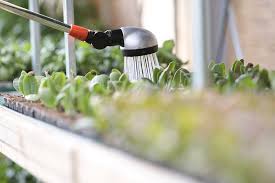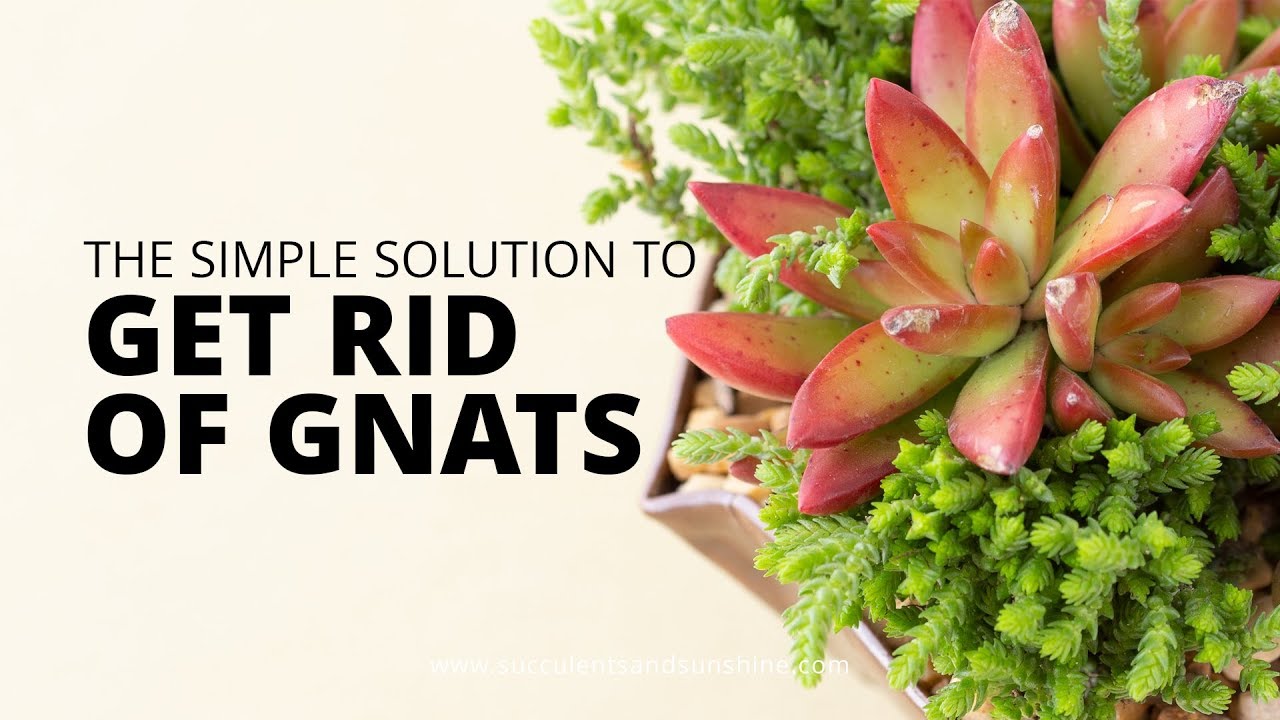So you have indoor succulents and you’ve seen your first gnats flying around your babies. You’re lucky that you haven’t had this problem yet! Succulent gnats aren’t the worst or most dangerous bugs that can be on your succulents—look up mealybugs and pray you don’t get them! Finding gnats on your succulents is, at the very least, annoying.
I’m happy to say I know how to get rid of succulent gnats! s. these little guys can also be called succulent fungus gnats)!.
As a succulent lover few things are more irritating than finding small black gnats flying around your prized plants. While generally harmless these tiny insects can quickly become a nuisance.
The good news is there are several effective methods to get rid of gnats on your succulents for good In this article, we’ll explore the causes of gnats on succulents and provide proven solutions to eliminate them
What Causes Gnats on Succulents?
Before diving into extermination tactics, it helps to understand what attracts gnats to succulents in the first place.
The main culprit is moist soil. Gnats lay their eggs and thrive in damp conditions. If your succulent soil stays wet for too long between waterings, it creates an ideal breeding ground for fungus gnats.
Excessive moisture allows gnat larvae to flourish in the soil. As adults emerge, they are drawn to the succulent leaves where moisture collects.
Other potential causes of gnats include:
- Overwatering which keeps soil soggy
- Poor drainage from dense or clay-heavy soil
- Covered pots that prevent soil from drying out
- Excess humus and organic matter in soil
- Decaying plant debris under succulent leaves
- Overlap in watering cycles
Fortunately, correcting these moisture issues and employing targeted treatments can eliminate gnats for good.
How to Get Rid of Gnats on Succulents
Here are the most effective methods to eliminate gnats from your succulents:
1. Allow Soil to Dry Out Completely
Since damp soil provides an ideal habitat for gnats, allowing it to dry out completely disrupts their lifecycle.
Stop watering your succulents for 1-2 weeks until the soil is bone dry. This will kill gnat larvae and eggs in the soil, halting their reproduction.
It also removes the moist environment adult gnats need to survive. Be sure to let the soil dry fully between future waterings.
2. Remove Decaying Plant Debris
Gently remove any dead leaves, stems or other debris that has accumulated under and around your succulents. This decaying organic matter can harbor moisture and attract gnats.
3. Use Yellow Sticky Traps
Hang yellow sticky traps near your infested succulents. Adult gnats are attracted to the color and get stuck on the adhesive.
Traps won’t fully solve the problem, but they capture many flying gnats to provide immediate relief.
4. Make Cider Vinegar Traps
Fill jars with apple cider vinegar, add a drop of soap, and cover with plastic wrap secured by a rubber band. Poke small holes in the plastic.
The vinegar’s scent lures gnats inside where the soap reduces surface tension so they drown. Place these DIY traps around your plants.
5. Apply Diatomaceous Earth
Sprinkle a fine layer of diatomaceous earth on the soil surface after watering. The sharp particles kill gnats through desiccation when they land on it.
But use care when applying, as the dust can also dry out succulent leaves. Diatomaceous earth is most effective on completely dry soil.
6. Use Neem Oil Foliar Spray
Make a diluted neem oil spray and lightly mist the leaves. The oil coats the plant and acts as a repellent against adult gnats landing and laying eggs.
Be sure to test on a small area first, as some succulents are sensitive to oils. Always apply diluted neem oil in evening or cloudy weather to avoid leaf burn.
7. Apply Insecticidal Soap
Insecticidal soaps based on potassium salts of fatty acids can help eliminate gnats when applied to leaves and soil.
Use extreme dilution (a few drops per quart of water) and drench soil to kill larvae. spraying leaves kills adults. Rinse residue off leaves after application.
8. Employ Chemical Pesticides
As a last resort, commercial insecticide sprays can be used to kill gnats on heavily infested succulents. Always dilute per label instructions and rinse leaves after application. Take care to minimize risks to beneficial pollinators.
With persistence using these methods, you can eradicate gnats from your succulents for good. The key is tackling excess moisture and interrupting the gnat lifecycle from egg to larvae to mature insect.
Preventing Future Infestations of Gnats on Succulents
Once you’ve succeeded in eliminating gnats, here are some tips to help prevent recurrence:
- Allow soil to dry out completely between waterings
- Provide well-draining soil and drainage holes
- Water succulents only when showing signs of thirst
- Apply gravel mulch to dry out upper soil layers
- Remove fallen leaves and debris promptly
- Avoid excess humus and compost in soil mixes
- Use yellow sticky traps continuously to catch stray gnats
- Apply insecticidal soap monthly as a repellent
By tightly controlling moisture and employing preventive treatments, you can keep gnats away for good and enjoy your gnat-free succulents.
What to Do if Gnats Persist on Your Succulents
Sometimes gnat infestations can be stubborn if conditions are ideal for them to breed rapidly. Here are some final tips if you just can’t seem to shake those persistent gnats:
-
Repot succulents in fresh, sterile potting mix to fully eliminate larvae. Be sure to clean pots thoroughly as well.
-
Treat surrounding plants as gnats can spread from nearby flower beds.
-
Remove and isolate heavily infested plants until gnats are fully gone. This prevents spreading.
-
Apply chemical pesticides or insect growth regulators as a stronger treatment if needed.
-
Introduce natural predators like ladybugs or green lacewings to feed on larvae.
With dedication, even the most stubborn gnat problems can eventually be overcome. Don’t allow these tiny pests to detract from the joy of growing succulents! Just employ persistent moisture control and pest management techniques until your plants are gnat-free once again.
Frequently Asked Questions about Eliminating Gnats on Succulents
Here are answers to some common questions about how to remove gnats from succulents:
Are gnats harmful to succulents?
No, gnats do not directly damage or feed on succulents. They are primarily a nuisance due to their swarming presence and reproduction in moist soil. But they won’t harm the plant.
How do you know if succulents have gnats?
Look closely at the soil surface and under leaves for small black insects flying or crawling around. Tap plants gently and look for gnats emerging. Sticky traps will also reveal populations. Larvae are tiny white worms in the soil.
Should I repot my succulents to get rid of gnats?
Repotting into fresh dry soil eliminates larvae living in old potting mix. Be sure to fully clean pots to remove eggs. Isolate heavily infested plants after repotting until gnats are gone.
Will hydrogen peroxide kill gnats on succulents?
Yes, dilute hydrogen peroxide solution kills gnat eggs and larvae if thoroughly soaked into the soil. Avoid contact with leaves. But allowing soil to fully dry out works just as well and is safer.
Can I use rubbing alcohol to kill succulent gnats?
You can make a solution of 1 part rubbing alcohol to 3 parts water and spray soil to kill larvae. But this risks harming succulent roots, so proceed with caution and avoid contact with leaves. Let soil dry after treatment.
By understanding what attracts gnats and employing targeted pest control methods, you can successfully rid your succulents of these annoying insects for good. Just be vigilant, take appropriate action at the first sign of gnats, and enjoy your gnat-free succulents.
Get Rid of the Eggs
I let the soil dry out and looked in the dirt and under the leaves of the plants for eggs while I did that. The last thing you need is for more juicy gnats to hatch after the adults have already died. Another good way to ensure that you get rid of all the eggs is to repot your succulents.
What Causes Succulent Gnats
Gnats have been on my succulents almost every year around the same time in the fall. The first year was the worst, though. It was the start of fall, and my friends and I had just moved into a new apartment. I put my cute little succulents on the window sill in my bedroom, the one window in the living room, and the one small window in the kitchen. After a few weeks, I started to see tiny bugs flying across my field of vision every once in a while. I was doing my homework at my kitchen table one night when I noticed these tiny bugs on the plant on my table. I felt terrible—I didn’t want to be THAT roommate who let tiny, flying plant gnats take over the apartment.
I took all of my succulents back into my room right away and started looking up ways to get rid of the little bugs. I had to find the cause of these pests — they were everywhere. I had succulent gnats flying in the air and crawling around in the soil laying eggs.
 If you’ve read any of my other posts, you know that over-watering is definitely an issue for me and nearly all of my succulents are in glass pots. So of course when I learned that succulent gnats flock to excess water and love to lay their eggs in extra moist soil, I immediately knew what the cause of my infestation was.
If you’ve read any of my other posts, you know that over-watering is definitely an issue for me and nearly all of my succulents are in glass pots. So of course when I learned that succulent gnats flock to excess water and love to lay their eggs in extra moist soil, I immediately knew what the cause of my infestation was.
I just laughed. It seems like I was giving my plants too much water, and the glass containers they live in don’t help at all. I had gnats reproducing like crazy.
How did I get rid of the fungal gnats? I tried five different methods and finally succeeded!
SUCCULENT CARE TIPS | HOW TO GET RID OF GNATS ON YOUR SUCCULENTS
- The Ultimate Guide to Growing Strawberries in Raised Beds - August 8, 2025
- No-Dig Garden Beds: The Easiest Way to Grow a Beautiful Garden - August 6, 2025
- How to Protect and Preserve Wood for Raised Garden Beds - August 6, 2025

